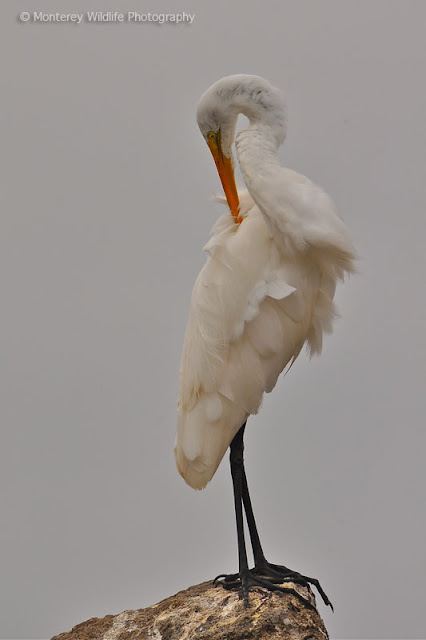Our weekly Bird Walks continue with a productive day along the Bay in Pacific Grove, California. The Point Pinos Lighthouse is one of the oldest continuously operating lighthouses on the California coast. It is always a welcome sight.
These shots are all taken with a Nikon D7000 with a 300mm f/4 lens with a 2.0x teleconverter. Shutter speed is set manually at 1/1000 shooting with the lens wide open at f/8, ISO is variable depending on the available light. We find that this combination does auto-fucus quite well although most references from Nikon and other sources suggest that focusing is not as fast or reliable. It certainly makes an ideal walk-around combination for documenting the local wildlife.
Crespi Pond is between the lighthouse and the Bay and we always find Coots in the golf course grass and gulls bathing in the pond.
The shoreline nearby hosts many species. This day was typical as we saw many of the expected birds. There is a constant movement of Brown Pelicans soaring along the shoreline. This first year bird shows the expected lighter coloration.
Working the shoreline are the Willets which are often in small groups and Whimbrels which are usually solitary.
This day we saw the Ruddy Turnstone that was among a group of Black Turnstones. Here we see a good size comparison between the two species. Wikipedia information on the Ruddy Turnstone can be found here.
We didn't get a good profile shot of the Ruddy Turnstone but this shot shows a bit more detail.
We also saw a grouping of a Surf Bird, a Black Turnstone and a Black-bellied Plover. It was unusual to see all three together.
On the sandy area just above the high tide line we spotted a solitary Western Meadowlark. We got several poses that show the coloration. Although quite common in the western US, this is the first one we have seen along the Monterey Bay Shore. Wikipedia information on the Western Meadowlark can be found here.
The Glaucous-winged Gull is seen far less often along the shore. This example shows the typical "dusty" head coloration that is quite different from the more common Western Gull. Wikipedia information about the Glaucous-winged Gull can be found here.

























































